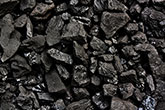Mercury – are proposed emission limits achievable?
Published by Louise Mulhall,
Editorial Assistant
World Coal,
Pulverised coal-fired power plants are slowly being phased out, to be replaced either by state of the art super and ultrasupercritical coal plants or by alternative technologies such as gas and renewables. Many may see the tightening emission limits for mercury in North America and the EU as, perhaps, a shot in the head for an already dying breed. But coal plays an important role in the energy mix in some regions and so the cleaning up of existing units is important and offers a significant market for new flue-gas cleaning technologies.
The US has seen a huge market emerge for sorbents and oxidants to help capture mercury in existing or enhanced emission control systems on its coal-fired fleet. However, the North American market is almost saturated. Potential new markets are building in Asia (China, India and other SE Asian nations) and in Europe, where more stringent emission limits are being discussed. However, agreement on these standards has not yet been reached. The existing limits for mercury emissions from coal plants in China (30 µg/m3) is not particularly challenging. But the Chinese Government is allegedly in discussion to lower the limits, possibly varying them by province or region, down to 10 or maybe even 5 µg/m3.
The new EU BREF (best available technology reference document) of the Industrial Emission Directive is still undergoing review, but current indications are that emission limits may be set within a range of 9 down to 1 µg/m3 or even lower for some plants (the exact value to be determined on a case by case basis under each plant specific permit). Arguments have already been raised that the lower range of the proposed limits would be challenging, if not impossible, for some plants, especially units firing lignite. Unpublished German studies have suggested that the conversion of the US emission limit into a similar limit for the EU has not been carried out correctly, with assumptions for plant efficiencies and running conditions being inappropriate for such a direct translation of values. Further, the basis of the US limit, which is that plants should achieve emissions comparable to those of the top performing 12% of coal-fired units in the US, may not be representative in other countries. Within this top performing set are fluidised bed systems, dry sorbent systems and advanced coal units which simply do not compare with the fleet of plants currently operational in the EU.
In Africa as well, governments are beginning to consider how ratification of the new UN Minamata Convention on Mercury could affect existing and new coal plants. The text of the Convention requires the use of BAT (best available technologies) on new plants and for emission control or reduction measures, including BAT, at existing units, within 5 - 10 years of ratification, respectively. Whilst the UNEP Coal Partnership, led by the IEA CCC, has worked with the international experts group to produce proposed guidance on what BAT may mean for different regions, it is hard for countries with challenging coals (high ash, high moisture), and other regional issues (limited water availability, limited space, ageing fleets, high power demand, economic issues) to understand just how they can put mercury reduction on their agenda in an achievable manner.
These challenges, and more, will be being discussed at a series of meetings at the stunning Kruger Gate Hotel in South Africa from 28 February - 3 March 2017. The first day of the event, funded by the US Department of State and supported by Eskom and the Government of South Africa (DEAT), will concentrate on discussing energy efficiency and emission challenges and a potential road map for mercury reduction in South Africa and neighbouring African nations. The following two and a half days will comprise an expert workshop on reducing mercury and related emissions from coal combustion. This workshop will be attended by government bodies, utilities and industry from China, Russia, Germany, Slovenia, the UK, USA, India and elsewhere. The final day will include a half day meeting of the UN Environment Coal Partnership to discuss current and future projects in emerging economies and the future of the partnership under the Minamata Convention as it moves towards ratification, expected later this year.
This meeting is very limited in capacity with fewer than 20 spaces left available. Please check the website and register as soon as possible if you intend to join Mercury. In addition to the technical meetings and workshop, the event includes several receptions and gala events. Two optional game drives out into Kruger National Park are built in to the meeting agenda.
http://mec12.coalconferences.org/ibis/MEC12/home
Read the article online at: https://www.worldcoal.com/power/06012017/mercury--are-proposed-emission-limits-achievable/
You might also like
Peabody and Anglo American release updates on steelmaking coal acquisition
Peabody has notified Anglo American of a Material Adverse Change impacting its planned acquisition of steelmaking coal assets from the company, but Anglo is contesting this claim.


